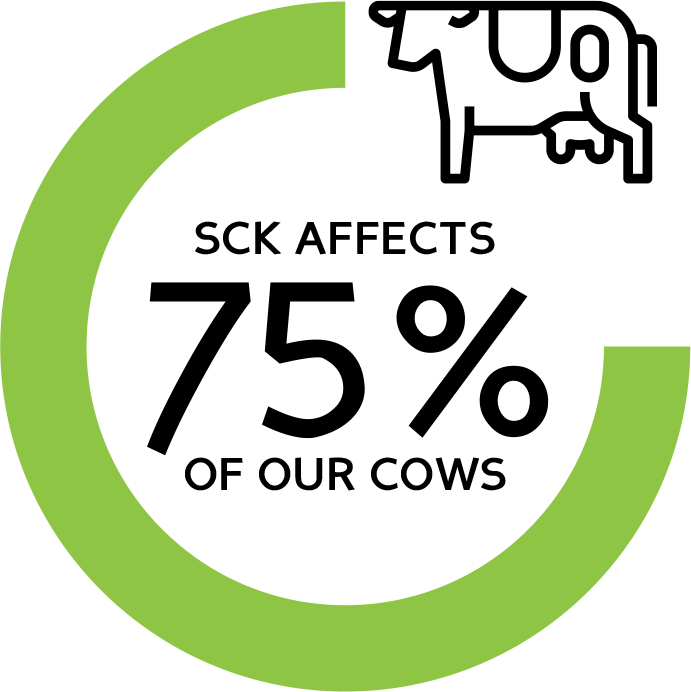It’s time we
talked about
subclinical ketosis
It affects 75% of our cows yet often goes unseen, a disease draining the life and profitability out of dairy herds due to its uncanny ability to lower in-calf rates.
In financial terms, this is a significant cost to our dairy clients.


Ketosis — a condition of energy deficit
It’s normal for a cow to lose weight post-calving because of the mismatch between what she can physically eat and the feed supplied to meet her requirements. Ketosis takes this to the extreme.
When a cow begins breaking down fat faster than she can cope with, it can lead to a severe negative energy balance. This can compromise health and condition including fertility rates.
Subclinical vs clinical ketosis
Sub-clinical ketosis is simply ketosis without the clinical symptoms of poor condition, lethargy or bad breath.
Reduced fertility still occurs.
Rumenox® can help
Rumenox® helps a cow’s rumen function better, adjusting fermentation to a level more beneficial to the overall health of the cow. With rumen function in balance, cows are less likely to be affected by ketosis.
In fact, Rumenox® reduces the risk by 40%, the flow-on effect supports higher in-calf rates.

Share:

Pasture Bloat – Losing just one cow can cost over $6,000
Pasture bloat is one of the costliest diseases that face the NZ dairy industry. Even with only a small number of cases, a combination of

Understanding ketosis in New Zealand dairy cows: causes, symptoms, diagnosis, and treatment
Ketosis is a common metabolic disease that affects New Zealand dairy cows, particularly during early lactation. Learn about ketosis and how to treat it.

Monensin. The active ingredient in Rumenox.
Rumenox® is the market leading form of monensin in New Zealand. It is available in two forms

